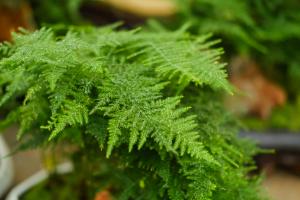What Plant is a Predator
Introduction
When we think of predators, we usually think of animals that hunt and feed on other animals. However, did you know that there are plants that are predators too? These plants are carnivorous, which means they feed on insects, spiders, and even small animals like mice. In this article, we will explore the world of carnivorous plants and discover what plant is a predator.
Carnivorous Plants
Carnivorous plants are plants that have adapted to grow in nutrient-poor environments by evolving the ability to trap, kill, and digest insects and other small animals. There are over 600 known species of carnivorous plants, but the most famous ones are Venus Flytraps, Pitcher Plants, and Sundews.
Venus Flytrap
The Venus Flytrap is perhaps the most well-known carnivorous plant. It is native to the southeastern United States and has distinctive leaves that resemble a pair of hinged jaws. When an insect lands on the leaves and touches the trigger hairs on the surface, the leaves snap shut, trapping the insect inside. The plant then secretes digestive enzymes that break down the insect's body, allowing the plant to absorb the nutrients.
Pitcher Plant
Pitcher Plants are another type of carnivorous plant that are found in North America, South America, and Asia. They have a long tubular structure that is filled with a digestive fluid. The plant's scent attracts insects and other small animals, which crawl into the tube looking for food or shelter. Once inside, the slippery walls of the tube make it difficult for the animals to climb out, and they often fall into the fluid at the bottom. The digestive enzymes in the fluid break down the animal's body, providing the plant with nutrients.
Sundew
Sundews are a type of carnivorous plant that are found in most parts of the world, including North America, South America, Europe, and Australia. They have leaves that are fringed with sticky tentacles that trap insects. The tentacles then curl inwards, bringing the insect closer to the center of the leaf where glands secrete digestive enzymes. The enzymes break down the insect's body, which the plant absorbs for nutrients.
Conclusion
In conclusion, carnivorous plants are fascinating examples of how plants have adapted to survive in nutrient-poor environments. Whether you are interested in biology, horticulture or just curious about the natural world, exploring carnivorous plants is an excellent way to broaden your knowledge. So, the answer to the question "what plant is a predator?" is: carnivorous plants!

 how many times do yo...
how many times do yo... how many planted tre...
how many planted tre... how many pine trees ...
how many pine trees ... how many pecan trees...
how many pecan trees... how many plants comp...
how many plants comp... how many plants can ...
how many plants can ... how many plants and ...
how many plants and ... how many pepper plan...
how many pepper plan...






























